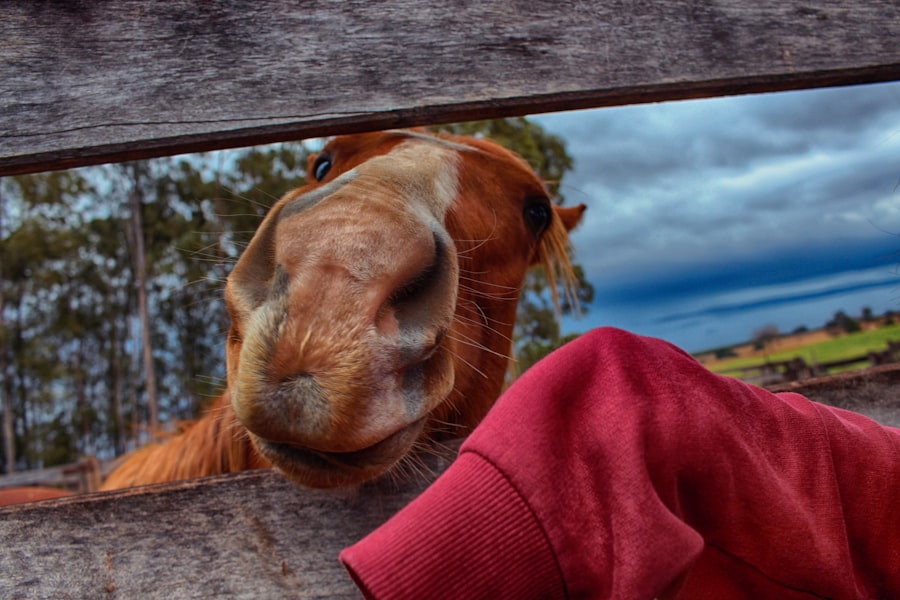Awkwardness is a universal experience, one that transcends cultures and generations. To understand its origins, you must delve into the realm of evolutionary psychology. This field suggests that awkwardness may have roots in our ancestral past, where social cohesion was vital for survival.
In small groups, individuals relied on each other for protection, food, and companionship. Any behavior that threatened group harmony could lead to ostracism, which in turn could jeopardize one’s survival. Thus, the discomfort you feel in awkward situations may be an evolutionary remnant, a signal from your brain alerting you to potential social danger.
As you navigate social interactions today, you might find that feelings of awkwardness arise when you perceive a breach of social norms or when you fear judgment from others. This instinctual response can be traced back to our ancestors, who needed to be acutely aware of their social standing within a group. The fear of being judged or rejected is deeply ingrained in your psyche, serving as a reminder to adhere to the unspoken rules of social engagement.
In this way, awkwardness can be seen as a protective mechanism, urging you to adjust your behavior to maintain social bonds and avoid isolation.
Key Takeaways
- Awkwardness has evolutionary roots, serving as a social cue to maintain group harmony and cohesion.
- Cultural norms heavily influence what is considered awkward behavior, leading to varying levels of discomfort across different societies.
- Body language plays a significant role in awkward situations, as nonverbal cues can either alleviate or exacerbate social discomfort.
- The brain’s response to awkwardness involves the activation of the same neural pathways associated with physical pain, highlighting the severity of social discomfort.
- Technology has both alleviated and exacerbated awkwardness, providing new platforms for social interaction while also creating opportunities for miscommunication and discomfort.
Cultural Differences in Awkwardness: How Social Norms Shape our Discomfort
Cultural context plays a significant role in shaping your experience of awkwardness. Different societies have varying norms and expectations regarding social interactions, which can influence how you perceive and react to awkward situations. For instance, in collectivist cultures, where group harmony is prioritized, any deviation from expected behavior may be met with heightened discomfort.
You might find that what feels awkward in one culture is perfectly acceptable in another, highlighting the fluidity of social norms across different contexts. Moreover, the way you express and manage awkwardness can also differ based on cultural upbringing. In some cultures, humor is employed as a coping mechanism to diffuse tension, while in others, silence may be the preferred response.
Understanding these cultural nuances can help you navigate social interactions more effectively. By recognizing that your feelings of awkwardness are not universal but rather shaped by cultural expectations, you can approach these situations with greater empathy and awareness.
The Role of Body Language in Awkward Situations: Understanding Nonverbal Cues

Body language is a powerful communicator in social interactions, often conveying more than words ever could. When you find yourself in an awkward situation, your nonverbal cues can either exacerbate or alleviate the discomfort. For instance, crossed arms or avoiding eye contact may signal defensiveness or disinterest, further intensifying the awkwardness.
Conversely, open body language and a warm smile can help bridge the gap between discomfort and connection. Being attuned to the body language of others is equally important. You may notice subtle shifts in posture or facial expressions that indicate someone else’s discomfort.
By recognizing these cues, you can adjust your own behavior to create a more comfortable atmosphere. Engaging in active listening and mirroring positive body language can help ease tension and foster a sense of connection, transforming an awkward moment into an opportunity for genuine interaction.
The Science of Awkwardness: How our Brain Responds to Social Discomfort
| Metrics | Data |
|---|---|
| Brain Activity | Increased activity in the anterior cingulate cortex and the middle prefrontal cortex |
| Physiological Responses | Increased heart rate, sweating, and blushing |
| Behavioral Reactions | Avoidance of eye contact, fidgeting, and nervous laughter |
| Neurotransmitters | Release of cortisol and adrenaline |
The experience of awkwardness is not merely a social phenomenon; it is deeply rooted in the biology of your brain. Neuroscientific research has shown that social discomfort activates specific areas of the brain associated with emotional processing and self-referential thought.
This neurological response can lead to a cycle of overthinking and self-doubt. You might find yourself replaying the awkward moment in your mind, analyzing every detail and worrying about how others perceived you. Understanding this brain response can empower you to break free from the cycle of negative thinking.
By recognizing that your brain is wired to react this way, you can practice self-compassion and remind yourself that everyone experiences awkwardness at some point.
Awkwardness in the Digital Age: The Impact of Technology on Social Interactions
In today’s digital age, technology has transformed the way you interact with others, often amplifying feelings of awkwardness. Social media platforms and messaging apps provide new avenues for communication but can also create misunderstandings and misinterpretations. The absence of nonverbal cues in text-based communication can lead to awkward exchanges, as tone and intent may be lost in translation.
Moreover, the pressure to present a curated version of yourself online can heighten feelings of inadequacy and social anxiety. You might find yourself comparing your experiences to those of others, leading to a sense of disconnection and awkwardness in real-life interactions. Navigating this digital landscape requires mindfulness; by being aware of how technology influences your social experiences, you can cultivate more authentic connections both online and offline.
The Influence of Personality Traits on Awkwardness: Introversion, Shyness, and Social Anxiety

Your personality traits play a significant role in how you experience and respond to awkwardness. Introverts may find social situations particularly challenging, as they often prefer solitary activities over large gatherings. In these instances, feelings of awkwardness may stem from overstimulation or discomfort in unfamiliar environments.
Recognizing your introverted nature can help you develop strategies for managing these situations without feeling overwhelmed. On the other hand, shyness and social anxiety can exacerbate feelings of awkwardness. If you tend to worry excessively about how others perceive you, even minor social interactions can become daunting.
Understanding the roots of your shyness or anxiety is crucial for addressing these feelings head-on. By acknowledging your unique personality traits and their impact on your social experiences, you can work towards building confidence and resilience in the face of awkwardness.
Coping Strategies for Dealing with Awkward Situations: Tips for Managing Discomfort
When faced with an awkward situation, having coping strategies at your disposal can make all the difference. One effective approach is to practice mindfulness techniques that ground you in the present moment. By focusing on your breath or engaging your senses, you can reduce anxiety and regain composure during uncomfortable interactions.
This practice allows you to respond more thoughtfully rather than react impulsively out of discomfort. Another helpful strategy is to embrace humor as a way to diffuse tension. Sharing a light-hearted comment about the situation can not only ease your own discomfort but also help others feel more at ease.
Remember that everyone experiences awkward moments; by acknowledging this shared human experience, you can foster connection and understanding with those around you.
The Social Consequences of Awkwardness: How it Affects Relationships and Interactions
Awkwardness can have profound effects on your relationships and social interactions. While it may seem like a minor inconvenience at times, persistent feelings of discomfort can lead to misunderstandings and strained connections with others. You might find yourself avoiding certain individuals or situations altogether due to fear of experiencing awkwardness again.
However, it’s essential to recognize that awkward moments can also serve as opportunities for growth within relationships. When you navigate these uncomfortable situations together with others, it can foster deeper understanding and empathy. By addressing awkwardness openly and honestly, you create space for vulnerability and authenticity in your connections.
Awkwardness in Professional Settings: Navigating Uncomfortable Work Situations
In professional settings, awkwardness can manifest in various ways—from miscommunications during meetings to uncomfortable small talk at networking events. These situations often carry higher stakes due to the potential impact on your career or professional relationships. You may feel pressure to present yourself confidently while simultaneously grappling with feelings of self-doubt or anxiety.
To navigate these uncomfortable work situations effectively, consider preparing ahead of time by practicing conversation starters or responses to common questions. This preparation can help alleviate some anxiety and boost your confidence when interacting with colleagues or clients. Additionally, fostering a culture of openness within your workplace can encourage others to share their own experiences with awkwardness, creating an environment where everyone feels more comfortable.
Overcoming Awkwardness: Techniques for Building Confidence and Social Skills
Overcoming feelings of awkwardness requires intentional effort and practice. One effective technique is to gradually expose yourself to social situations that challenge your comfort zone. Start small by engaging in brief conversations with acquaintances or participating in group activities where you feel relatively at ease.
As you build confidence through these experiences, you’ll find it easier to navigate more challenging interactions. Additionally, consider seeking feedback from trusted friends or mentors regarding your social skills. Constructive criticism can provide valuable insights into areas for improvement while also reinforcing your strengths.
By actively working on your communication skills and embracing opportunities for growth, you’ll gradually diminish the power that awkwardness holds over you.
The Future of Awkwardness: How Changing Social Dynamics will Impact our Discomfort
As society continues to evolve, so too will our experiences with awkwardness. Changing social dynamics—such as increased diversity and globalization—will likely influence how we perceive and respond to uncomfortable situations. You may find that new cultural norms emerge as people from different backgrounds interact more frequently, leading to a broader understanding of what constitutes “awkward” behavior.
Moreover, as technology continues to shape our communication methods, it’s essential to remain adaptable in navigating these changes. Embracing new forms of interaction while maintaining awareness of their potential pitfalls will be crucial for fostering meaningful connections in an increasingly digital world. Ultimately, by cultivating empathy and understanding towards yourself and others during moments of awkwardness, you’ll contribute positively to the evolving landscape of human interaction.
In exploring the evolutionary reasons for awkwardness, it’s fascinating to consider how this trait might have developed as a social tool. Awkwardness, often perceived negatively, could have played a role in human evolution by signaling vulnerability or a need for social bonding, thus fostering group cohesion and cooperation. For a deeper dive into the peculiarities of human behavior and its evolutionary underpinnings, you might find this article on Freaky Science particularly insightful. It delves into various aspects of human evolution and the quirky traits that have emerged as a result.
WATCH THIS! The Default Mode Network: Why You Can’t Stop Thinking About That Cringe Moment
FAQs
What is awkwardness?
Awkwardness is a feeling of discomfort or embarrassment in social situations, often resulting from a lack of smoothness or grace in one’s actions or speech.
What is the evolutionary reason for awkwardness?
One possible evolutionary reason for awkwardness is that it serves as a social signal to indicate that a person is aware of their social mistakes and is trying to correct them. This can help to maintain social harmony and cooperation within a group.
How does awkwardness relate to social interactions?
Awkwardness can arise in social interactions when there is a mismatch between expected social norms and the actual behavior of an individual. This can lead to discomfort and tension in the interaction.
Is awkwardness a universal experience?
Yes, awkwardness is a universal experience that is observed across different cultures and societies. The specific triggers for awkwardness may vary, but the feeling itself is a common human experience.
Can awkwardness be beneficial in any way?
In some cases, awkwardness can serve as a signal of humility and self-awareness, which can be endearing to others. It can also prompt individuals to reflect on their behavior and strive for improvement in social interactions.
